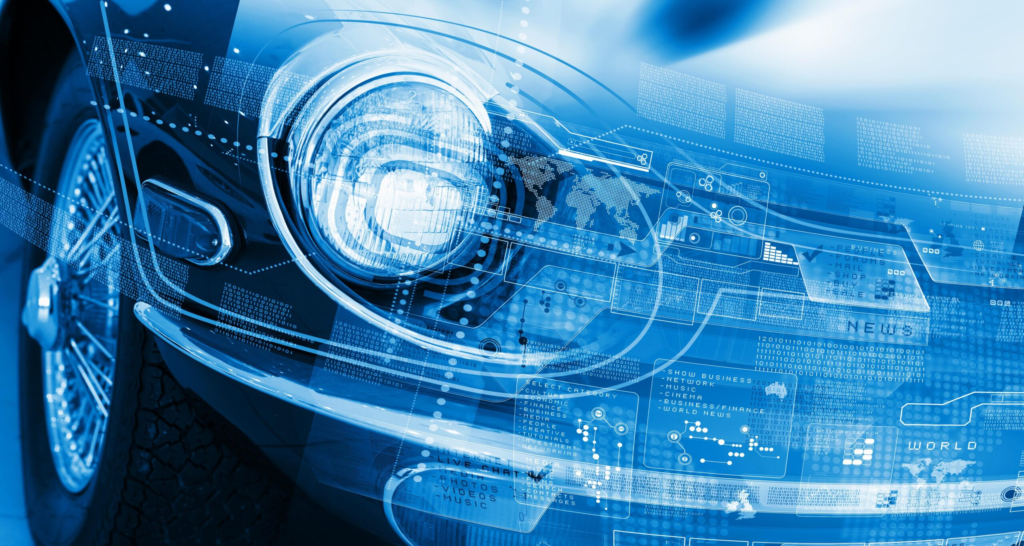
3D printing, also known as additive manufacturing, has revolutionized various industries, and automotive manufacturing is no exception. This innovative technology is reshaping traditional methods by offering new design possibilities, reducing production costs, and accelerating the development of complex automotive components. Here’s an exploration of how 3D printing is transforming automotive manufacturing:

1. Rapid Prototyping and Iterative Design:
One of the primary advantages of 3D printing in automotive manufacturing is rapid prototyping. Designers and engineers can quickly create physical prototypes of automotive parts and components directly from digital models. This capability allows for iterative design processes where multiple versions of a part can be tested and refined in a shorter time frame. It accelerates product development cycles and enables faster integration of design improvements based on testing and feedback.
2. Complex Geometries and Lightweight Structures:
Traditional manufacturing techniques often have limitations in producing complex geometries and intricate designs. 3D printing offers the freedom to manufacture highly complex shapes, organic forms, and lightweight structures that are difficult or impossible to achieve with conventional methods. This capability is particularly beneficial in automotive applications where lightweight materials and optimized geometries can improve fuel efficiency, performance, and overall vehicle dynamics.
3. Customization and Personalization:
3D printing enables automotive manufacturers to customize parts and components according to specific customer preferences or vehicle models. From personalized interior trim pieces to bespoke exterior accessories, 3D printing facilitates on-demand production of unique, tailor-made automotive components. This customization capability enhances customer satisfaction, supports niche markets, and enables automotive brands to differentiate their products in a competitive market.
4. Supply Chain Efficiency and Inventory Management:
Additive manufacturing reduces the reliance on traditional supply chains for sourcing parts and components. Automotive manufacturers can produce parts locally or on-site, eliminating the need for extensive warehousing and reducing lead times associated with global logistics. By adopting 3D printing, companies can achieve on-demand production, streamline inventory management, and respond more quickly to fluctuations in market demand or changes in design requirements.
5. Tooling and Jig Production:

3D printing is also transforming tooling and jig production in automotive manufacturing. Customized fixtures, assembly aids, and manufacturing tools can be 3D printed to support production processes, improve accuracy, and reduce assembly times. Unlike traditional methods that require lengthy lead times for tooling fabrication, additive manufacturing allows for rapid production of tooling solutions that are cost-effective and tailored to specific manufacturing needs.
6. Sustainable Manufacturing Practices:
3D printing contributes to sustainable manufacturing practices in the automotive industry by reducing material waste and energy consumption. Additive manufacturing processes generate minimal waste compared to subtractive manufacturing techniques, where excess material is often discarded during machining or casting processes. Additionally, lightweight designs produced through 3D printing contribute to fuel savings and lower carbon emissions over the lifecycle of vehicles.
7. Material Innovation and Performance Enhancements:
Advancements in 3D printing materials are expanding the possibilities for automotive applications. High-performance polymers, composites, and metal alloys developed specifically for additive manufacturing offer superior strength-to-weight ratios, thermal resistance, and durability. These materials enable the production of components that meet stringent performance requirements for automotive safety, reliability, and longevity.
8. On-Demand Spare Parts and Aftermarket Solutions:
3D printing facilitates on-demand production of spare parts and aftermarket components for older vehicle models or discontinued parts. Automotive manufacturers and dealerships can maintain a digital inventory of 3D printable parts, reducing the storage costs associated with maintaining physical inventories of spare parts. This capability ensures availability of critical components, prolongs the operational life of vehicles, and enhances customer service through efficient repair and maintenance solutions.
9. Collaboration and Innovation Ecosystems:
The adoption of 3D printing in automotive manufacturing has fostered collaboration among automotive OEMs, technology providers, and research institutions. Industry partnerships and innovation ecosystems facilitate the exchange of knowledge, expertise, and best practices in additive manufacturing applications. This collaborative approach accelerates technological advancements, promotes innovation in materials and processes, and drives continuous improvement across the automotive manufacturing supply chain.
10. Future Prospects and Industry Adoption:
Looking ahead, the automotive industry is poised to further integrate 3D printing technologies into mainstream manufacturing processes. Continued advancements in additive manufacturing techniques, materials science, and digital design tools will expand the scope and capabilities of 3D printing in automotive applications. As adoption rates increase and costs continue to decline, additive manufacturing is expected to play a pivotal role in shaping the future of automotive manufacturing, offering new opportunities for efficiency, sustainability, and innovation.
Conclusion:
3D printing is transforming automotive manufacturing by revolutionizing design flexibility, production efficiency, and supply chain dynamics. From rapid prototyping and customized components to sustainable practices and on-demand manufacturing solutions, additive manufacturing technologies are driving innovation across the automotive industry. Embracing 3D printing enables automotive manufacturers to achieve faster time-to-market, reduce costs, and deliver vehicles that are more personalized, efficient, and technologically advanced than ever before.








